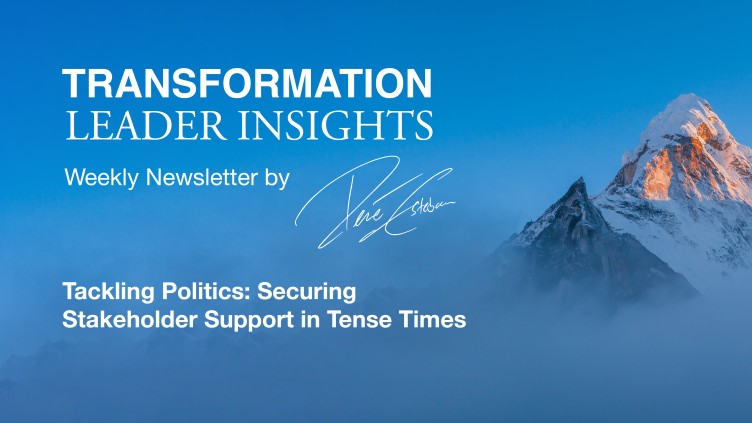
Change. A word that can stir a whirlwind of emotions within an organization. Fear, excitement, anticipation, dread – the spectrum is broad and diverse. Managing this change, particularly in tense times, is a task that falls squarely on the shoulders of the organization’s leaders.
In this intricate dance of transformation, stakeholders play a pivotal role. Their opinions, their concerns, and their buy-in, all factor into the success or failure of the proposed change. Understanding this dynamic and manoeuvring it effectively is an art that every successful leader must master.
1.The Yin and Yang of Business
Business, much like life, is about balance. The pull and push, the conflict and consensus, the yin and yang. In the business context, this dynamic is often seen in the form of conflicts of interest between stakeholders. Far from being a detrimental factor, these conflicts are, in fact, part of the business life cycle. They represent the varying perspectives that coexist within an organization, each essential in maintaining the balance and driving the organization forward.
2.Mapping the Stakeholder Landscape
Navigating change without a comprehensive stakeholder analysis is akin to sailing a ship without a compass. It’s not just careless; it’s reckless. Stakeholder analysis provides leaders with a clear understanding of who holds sway in the decision-making process, what their interests and concerns are, and how best to engage them. This knowledge forms the foundation of a robust stakeholder engagement strategy.
Preparation: The Key to Success
In the realm of change management, the adage “Failing to prepare is preparing to fail” holds true. Initiating large-scale change without first involving key stakeholders is a recipe for disaster. Their insights, their buy-in, and their support can be the wind beneath the wings of the proposed change. On the other hand, their resistance can be a formidable barrier. The importance of securing stakeholder buy-in before initiating change cannot be overemphasized.
Feedback: The Heartbeat of Stakeholder Engagement
Feedback is the heartbeat of stakeholder engagement. It’s the barometer that gauges the climate of opinions and perceptions within your stakeholder groups. However, as a leader, it’s important to remember that feedback, much like the heartbeat, is neither good nor bad – it is simply a sign of life, a manifestation of the ebbs and flows of opinions and sentiments.
To truly understand this heartbeat, to decode its rhythms and patterns, it’s often helpful to bring in someone neutral and unbiased. This third-party perspective can sieve through the layers of emotion, strip down personal biases, and distill the raw, unvarnished truth. This truth, when harnessed effectively, can inform a stakeholder engagement strategy that is grounded in reality and attuned to the nuances of stakeholder sentiments.
3. Ego: The Silent Saboteur
In the tumultuous journey of change management, the ego can be a silent saboteur. Leaders must always be vigilant to prevent their egos from clouding their judgment. The guiding principle should be “What’s right”, not “Who’s right”. This mindset can foster a culture of openness, mutual respect, and collaboration, all of which are crucial for successful change management.
4. Garnering Support in Tense Times: A Two-Step Approach
Successfully securing stakeholder support in tense times calls for a two-step approach:
- Engagement: Regular, open, and honest communication can build trust and foster a sense of inclusiveness. Stakeholders are more likely to support changes if they feel involved in the process.
- Negotiation: It’s important to address and manage conflicts of interest effectively. This may involve negotiation and compromise. Leaders must remember that a win-win solution is always the best outcome.
Research by Harvard Business Review underscores the importance of stakeholder engagement and negotiation in securing support for change initiatives*.
5. Leading Through Change
Leading an organization through the change in tense times is undoubtedly a daunting task. It requires a leader who can navigate the political landscape, engage and negotiate effectively with stakeholders, and, most importantly, put aside personal ego for the greater good of the organization.
In the words of Peter Drucker, “Management is doing things right; leadership is doing the right things.” As leaders, let’s strive to do the right things, always.
Ready to refocus and re-energize your organisation?
Let’s get in touch.
Your René Esteban
Founder, CEO of FocusFirst



